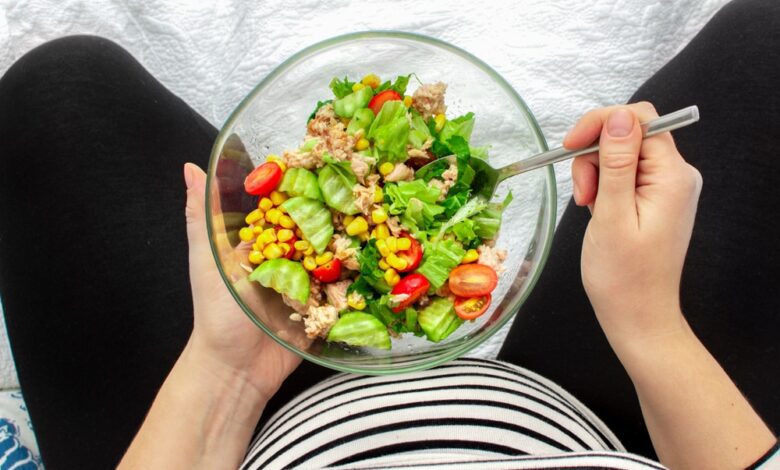Foods to Support Milk Production

1. Include Low Mercury Fish In Your Diet Twice A Week
Experts agree that including fish that contain lower levels of methylmercury in your breastfeeding diet is one of the most important things you can do to fuel your body with essential DHA and EPA omega-3 fatty acids, nutrients that play an important role in the health of the baby. In particular, DHA is an omega-3 fatty acid that is important for your baby’s brain and vision development.
Adequate DHA omega-3 fatty acids may also benefit a nursing mother, as some data suggest that consuming adequate amounts during the postpartum period may have a protective effect against postpartum symptoms. depression and promote general well-being.
Fish also provide important micronutrients that are important to consume in adequate amounts during the lactation stage, including iodine, selenium, and vitamin B12.
The American Academy of Pediatrics recommends that breastfeeding mothers get 200 to 300 mg of omega-3 fatty acids per day. They also recommend that this population. eat 1-2 servings of fish per week, with sustainably caught or farmed fish and shellfish offering the best options. Similarly, the Dietary Guidelines for Americans includes a recommendation that breastfeeding women consume between 9 and 12 ounces per week of a variety of seafood from lower-mercury options.
When choosing your fish, choosing options that are lower in methylmercury is an important step to consider. Methylmercury is a naturally occurring element found in our water sources, and therefore can accumulate in the fish we eat. This metal, when consumed in large amounts, is toxic to the nervous system and can result in negative effects on a baby’s brain and nervous system development.
Safe Catch is the only seafood brand that tests every Elite skipjack tuna and salmon to mercury limits that are 10X and 25x more stringent than the FDA action limit, respectively. Plus, these fish choices meet Consumer Report’s “low mercury standards” set for vulnerable populations like pregnant women and young children and are the official Seafood of the American Pregnancy Association. Safe Catch also uses Certified Sustainable fishing practices through the Marine Stewardship Council where Safe Catch tuna and salmon are internationally certified to the MSC fisheries standard of sustainability.
2. Focus on Essential Micronutrients
Your breast milk naturally contains the nutrients your baby needs to grow and develop. And while some nutrients are found in your milk regardless of what you eat, other nutrient levels depend on your intake – meaning that if your diet is low in certain amounts of key nutrients, your breast milk may not have optimal levels.
Choline, iodine, selenium, and vitamin A are key nutrients that breastfeeding mothers should make sure they are getting enough of. Good foods to include in a breastfeeding diet that provide at least one of these nutrients include:
3. Drink Caffeine in Moderation
Unlike during pregnancy, when some experts say that sticking to a maximum of 200 mg of caffeine daily is recommended, you can include a good amount of this stimulant in your breastfeeding diet, because the very low amount of the mother’s caffeine intake is transferred to breast milk. Because of this, moderate amounts of caffeine do not seem to be as big of a concern as they were during pregnancy. So, feel free to enjoy your morning cup of Joe when you’re breastfeeding — you might still want to hold off on the triple espresso latte until you’re done with your lactation journey.
The Right Nutrients For A Healthy Breastfeeding Journey
When a mother is breastfeeding, her food choices become incredibly important to support not only her health and well-being but also her baby’s growth and development. Choosing the right foods, such as Safe Catch Elite Wild Tuna and other lower-mercury fish, plenty of produce, and eggs, can help ensure that mom is getting what she needs and that the breast milk being fed to baby is as nutrient dense. as possible. Prioritizing your diet when you’re nursing a newborn may not be the easiest thing to do, but in the long run, doing so may be one of the best things you can do for yourself and for your baby
Lauren Manaker – MS, RDN, LD, CLEC, CPT
Registered Dietitian, Certified Lactation Educator-Counselor, Freelance Writer, Dietitian Spokesperson, Media Dietitian
@laurenlovesnutrition





